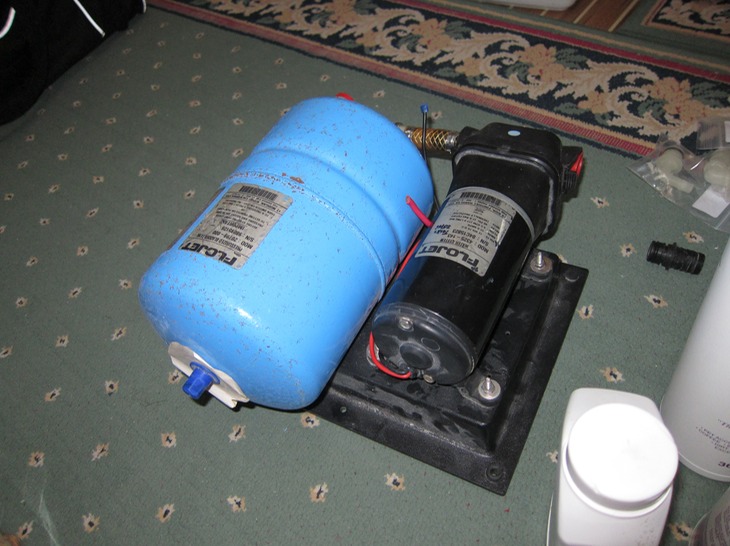You’d think Mark’d had enough of fiberglassing for the year! However, there was a bit of structural work to be done on the deck to install our new Maxwell windlass.

The old Simpson Lawrence horizontal windlass served us well over the years through several motors and a gypsy replacement.
As with most original boat systems at Reach’s current age, the windlass is 16 years old and we were looking for an upgrade ~ it was too bad that they didn’t make this type any more.
We liked the horizontal windlass orientation with the motor above deck and straight chain fall. The Maxwell horizontal windlass fit the old space reasonably well, yet required new holes in the deck to feed bolt and anchor chain positions.
I had a few scary flashbacks when the grinder came out! Fortunately, the deck here was solid glass about 3/4” thick so a glass job with woven roving was straitforward for someone with Mark’s experience, especially of late…
A bit more height using a piece of starboard was added to allow the longer windlass body to be positioned aft enough to align the anchor chain fall.
After the deck cured, a plinth was to be made to provide a flat surface for the 1” piece of starboard, which was cut as a base for the new windlass.
The new deck and base pieces were drilled with holes to bolt the final structure into compression.
Finally, new wires were crimped and run to the solenoid box and circuit breaker behind the saloon settee. The Maxwell windlass passed initial tests with the chain attached, using the remote controls, a new wireless control and a manual winch test.
A wireless remote control is new to us, so Mark wants to made sure that a cutoff switch is accessible for the windlass in the event that the electronics fail or get activated inadvertently. That will require a remote with a cutoff built-in or a manual cutoff switch in easy reach.
While in project-mode, we also got a new fresh water pump. It’s quieter than our big old ballast-type pump that is still our reliable spare. The Shurflo pumps (plural) that we’d been using kept failing due to their variable speed pumps. As nice as they were in theory and when they worked, Shurflo eventually decided to discontinue them. Mark since found a Remco Aquajet variable speed pump that is made for RV’s and its working great with good pressure, speed adjustment and is quite quiet.


Besides maintenance replacements, we made one interesting addition to Reach. We decided to get a Vesper Marine AIS transponder, in addition to our Standard Horizon VHF/AIS receiver.
As a Class B transponder, this will now report our position as well as receive ship positions over the VHF. We had just enough space to install it in our control panel (blue box middle left).
Now we can see “REACH” reported on the Marine Traffic website along with the other few hundred ships outside of the Panama Canal area.
As an added bonus, the Vesper Marine AIS has an NMEA wifi-bridge built-in, so now we can access our entire electronic and navigational readouts from our NMEA2000 network via wifi signal on the boat.